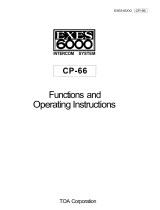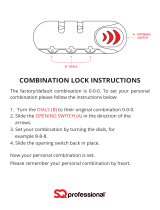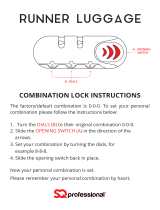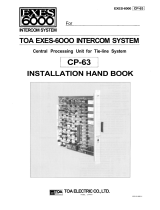Vizio Computer Accessories CPU-55 offers a wide range of features to enhance your communication experience. With its selective and optional functions, you can customize the system to meet your specific needs. Make use of the automatic line release to improve traffic processing and speech path availability. Activate camp-on-busy to automatically connect to a line as soon as it becomes free. Enjoy privacy with the privacy switch and single digit dialing for quick and easy connections.
Vizio Computer Accessories CPU-55 offers a wide range of features to enhance your communication experience. With its selective and optional functions, you can customize the system to meet your specific needs. Make use of the automatic line release to improve traffic processing and speech path availability. Activate camp-on-busy to automatically connect to a line as soon as it becomes free. Enjoy privacy with the privacy switch and single digit dialing for quick and easy connections.




















-
 1
1
-
 2
2
-
 3
3
-
 4
4
-
 5
5
-
 6
6
-
 7
7
-
 8
8
-
 9
9
-
 10
10
-
 11
11
-
 12
12
-
 13
13
-
 14
14
-
 15
15
-
 16
16
-
 17
17
-
 18
18
-
 19
19
-
 20
20
-
 21
21
-
 22
22
-
 23
23
-
 24
24
-
 25
25
-
 26
26
-
 27
27
-
 28
28
-
 29
29
-
 30
30
-
 31
31
-
 32
32
Vizio Computer Accessories CPU-55 User manual
- Type
- User manual
- This manual is also suitable for
Vizio Computer Accessories CPU-55 offers a wide range of features to enhance your communication experience. With its selective and optional functions, you can customize the system to meet your specific needs. Make use of the automatic line release to improve traffic processing and speech path availability. Activate camp-on-busy to automatically connect to a line as soon as it becomes free. Enjoy privacy with the privacy switch and single digit dialing for quick and easy connections.
Ask a question and I''ll find the answer in the document
Finding information in a document is now easier with AI
Other documents
-
 TOA Electronics CP-66 User manual
TOA Electronics CP-66 User manual
-
 SQ Professional 7832 User manual
SQ Professional 7832 User manual
-
 SQ Professional 8038 User manual
SQ Professional 8038 User manual
-
SQ Professional C01 Operating instructions
-
SQ Professional 801 Operating instructions
-
TOA YC-200 User manual
-
Vertical SBX IP 320 Features & Operation Manual
-
 TOA Electronics CP-63 User manual
TOA Electronics CP-63 User manual
-
NEC 824 User manual
-
Ericsson MFIM300 Feature Description And Operation Manual



































